Rise of the Ronin Review
I imagine that Rise of the Ronin is a monumental title for Team Ninja. After almost three decades since the studio’s founding, Rise of the Ronin marks its first foray into the open-world genre. While it does have its own share of significant flaws, I appreciate a lot of what this game is going for. If there’s one thing I took away after my 60-hour playthrough, I think Rise of the Ronin is one of the best games about the Bakumatsu period ever.
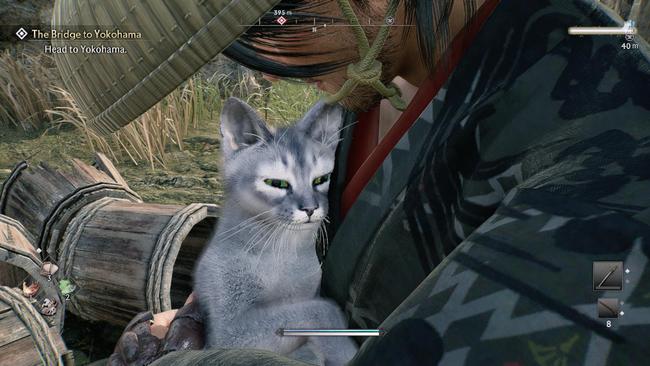
Following Team Ninja’s chain of linear stage-based action RPGs consisting of the Nioh duology, Stranger of Paradise: Final Fantasy Origin, and Wo Long: Fallen Dynasty, Rise of the Ronin takes a fundamentally different direction while retaining some DNA from its spiritual predecessors.
Besides the open-world model, it bears a grounded premise that features no supernatural, mythical, or fantastical elements throughout the game. Rise of the Ronin chronicles the events of the Bakumatsu era from shortly before the signing of the Treaty of Amity and Commerce between Japan and the United States to the Fall of Edo. Its narrative presentation is akin to a historical drama unfolding through the eyes of an original character.
Rise of the Ronin’s player-created character is integrated into history in an intriguing fashion. The game’s opening cutscene shows a pair of children fleeing from their village being raided and burned. They are saved by a skilled elderly swordswoman, who recruits the two into a secret organization tasked with assassinating the shogunate. Therefore, players actually design two separate characters because they are Blade Twins. These twins are separated after the prologue tutorial, and players have to choose which twin they want to be their main character. The other Blade Twin becomes a recurring antagonist as the player’s main character constantly pursues them.
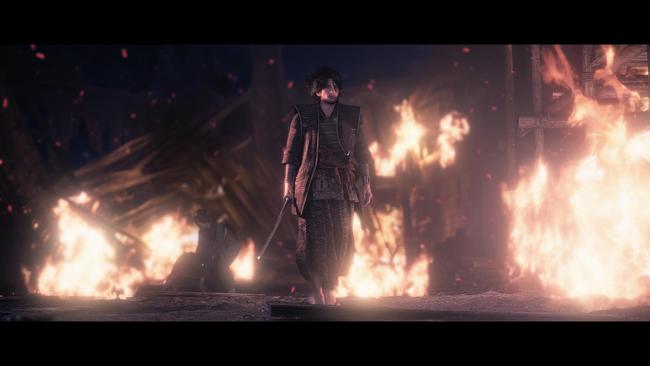
Previous Team Ninja RPGs have varied between featuring silent and voice protagonists. The first Nioh’s William was a voiced protagonist, though he spoke sparingly; Nioh 2, on the other hand, had an original created character that didn’t speak. Of course, Stranger of Paradise featured the iconic Jack Garland who had a memorable voice, memorable lines, and actively participated in its story. Wo Long followed Nioh 2’s footsteps once more with a silent protagonist that was created by the player.
In Rise of the Ronin’s case, the selected protagonist is mostly silent, though they occasionally do have voiced lines when the other Blade Twin is involved with the scene. Meanwhile, the unselected Blade Twin that confronts players is relatively more chatty and, oddly enough, feels like they possess more voiced interactions - despite being the one shunned from the main character spotlight. Other than that quirk, the protagonist is primarily a silent one who interacts with most of the cast through selectable unvoiced dialogue choices.
Despite this dissonance, one of the strongest parts of Rise of the Ronin is in its narrative presentation. Rise of the Ronin is strictly a human story that provides an in-depth examination of the Bakumatsu era from multiple perspectives. It presents a glimpse of history, albeit a dramatized version, with a vast cast of real historical figures. Rise of the Ronin’s development team must have done an absurd amount of research to rebuild this period of time and its inhabitants from the ground up in a realistic manner.
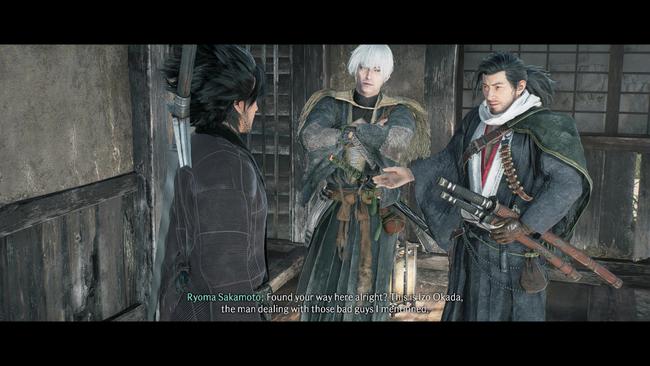
The plot is compelling because it inherently has a strong foundation. People will get to experience the human stories of why people were for or against the shogunate, the gradual exposure to Western imperialism as a result of the arrival of the Black Ships, and the numerous innocent bystanders caught in-between the turmoil throughout the country over multiple years. It’s a fascinating recreation of the tragic historical period that carried some of the bloodiest years in Japanese history.
There are moments in the story that lead to different minor story branches depending on the player’s choice, though it never diverges too much from the main path. These branches lead to some new scenes that ultimately don’t influence the overall outcome of the plot. Rather, they may give access to new side quests because a player chose to keep a certain person alive or sided with a certain faction at that point in time.
If people want to see the outcome of other branches, there is a system called Testament of the Soul that will allow them to travel back to previous areas and missions to re-do their choices.
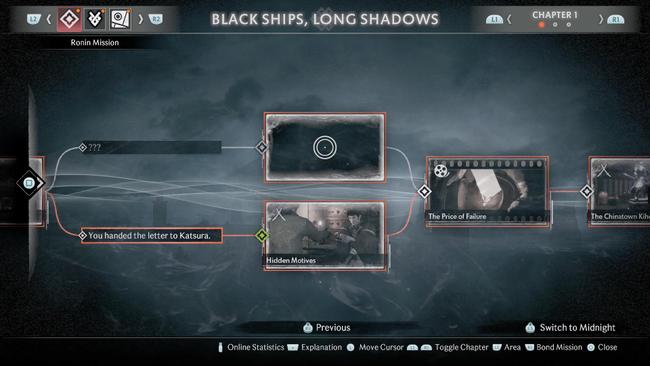
Many people fought and died over what they believed to be the correct path forward for Japan. Differing ideologies clashed often and the game details the social and political circumstances that led up to those significant points in history. Rise of the Ronin presents opposing viewpoints in a more personal manner through the Bonds system that forms many of the central pillars of this title’s mechanics.
As the main character meets new characters along their journey, they’ll establish a bond with them that can be leveled up. Taking that person on missions, completing their side quests, answering with favorable responses, giving them gifts, and other activities will all feed into their bond level up to a maximum level of four. Initially establishing that bond and progressing it all carry different rewards on a character-by-character basis; sometimes it’ll be new equipment, stat points, or leveling up a specific combat style - which I’ll delve into later.
Leveling up someone’s bond will provide a new conversation topic to gain more insight into a person’s thoughts on a specific subject. It’s nowhere near as complex as something like the Social Link / Confidant system from the Persona series, yet there’s enough of a gameplay benefit to pursue several of them to level up a combat style to bolster combat capabilities.
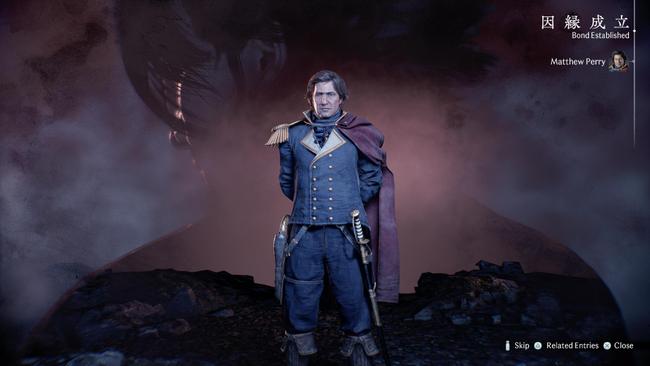
A handful of characters will additionally have a separate Favor bar to fill up with their Bond. This indicates that players can pursue a more romantic relationship called a Veiled Vow. It does reward players with a special accessory and in some cases, a few new scenes that imply that intimate activities were done. Amusingly enough, people can choose to break up with their partner or cheat on them with very little consequence.
While this entire system does encourage players to learn more about Rise of the Ronin’s cast, I have to admit that including a romance system for some does feel a bit strange because these characters were based on people who really did exist.
Regardless, the bonds forged with the numerous people in Rise of the Ronin are a nice touch to further flesh out the characterization of the people involved. I think the actual additional interactions themselves are a bit thin and barebone, though the gameplay rewards on a mechanical level make most of them a worthwhile endeavor.

Bond levels with people aren’t the only bonds players have to worry about in Rise of the Ronin; the open-world aspect is deeply intertwined with it, as well.
As I mentioned before, the fundamental part of this game that separates it from previous Team Ninja action RPGs is the ability to freely traverse the land. Rise of the Ronin still does have designated linear stages for story and side missions, but in between these sections are exploring the open world and doing open world activities. Players will have a total of three different open world maps to travel through, as the narrative takes them through the regions of Yokohama, Edo, and Kyoto.
Each region has a central populated city area that is surrounded by roughly a dozen different zones that would eventually become prefectures as history marches on. When a player goes into a new zone for the first time, nothing is marked on the map right away and there is no “Ubisoft tower” to activate.
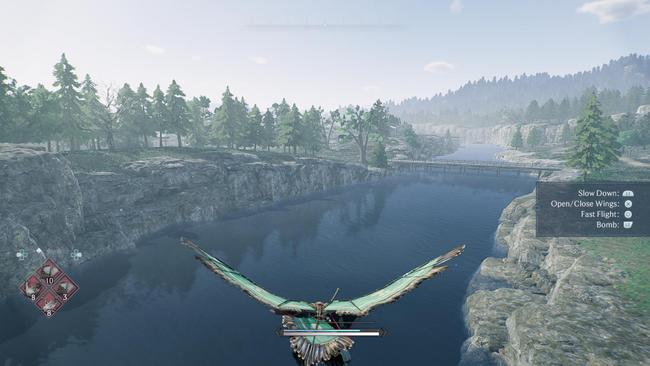
Instead, they have to either interact with something or complete an activity that would raise the bond level of that area. These include raising a Veiled Edge fast travel banner, clearing out enemies to restore Public Order, dealing with special marked Fugitives, praying at a Shrine, or helping out a marked NPC in need.
All of these activities raise the zone’s bond level, so doing any of them first in a new zone will establish a Bond Level 1 which, in turn, will show the first wave of map icons for a given area. Then, players can continue to do that area’s open-world activities now that they know where some of them are. This will further raise that area’s bond level to maximum level of 3, which will then show the exact location of where every single collectible and activity is in that specific zone. Relevant story and side missions that happen to take place in that area may need to be done before having certain sections of that zone be fully accessible. Yes, the “Ubisoft tower” in Rise of the Ronin’s open world isn’t a specific landmark - it’s a bond bar that has to be leveled up.
Unfortunately, I think Rise of the Ronin’s open world is its weakest element. There just isn’t much variety to it all; every single zone will have the same recycled activity types between clearing out a cluster of enemies at a marked spot, obtaining all the fast travel points, visiting landmarks, and getting all the collectible cats, treasure chests, and shrines. A few of them offer minigames like horseback archery, firearm training, or hang gliding challenges, but it wasn’t enough to break up the monotony.
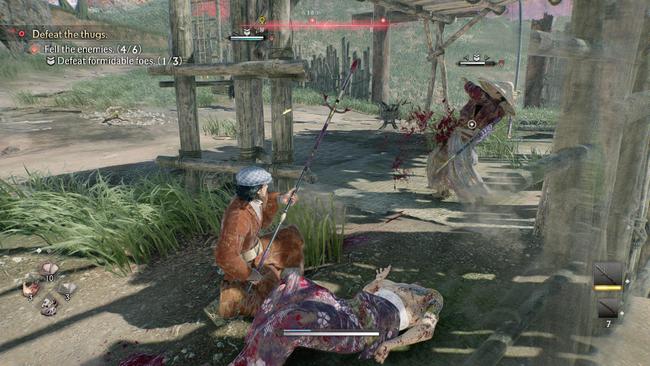
Even though there are some tools, such as the hang glider and grappling rope, to provide platforming challenges to some collectibles, it’s all been done before in many other open-world games, and Rise of the Ronin’s implementation doesn’t stand out from the crowd.
It doesn’t help that the enemy AI in the open world is some of the worst I’ve seen in an open-world game in years. Enemy pathing will constantly get confused around uneven terrain, and the leash distance before they walk back to their location is way too small, so it’s very easy to simply flee from enemy encampments to restore health passively. Enemy vision cones are shockingly narrow with dedicated stealth skills making assassinations easier than they already are. Even causing noise through breaking nearby objects won’t alert them most of the time.
What caught me off-guard the most is that players can actually go swim and dive underwater in Rise of the Ronin; there are only a few times it’s relevant throughout the journey, though it’s much more preferable than a body of water instantly killing players like prior Team Ninja titles.
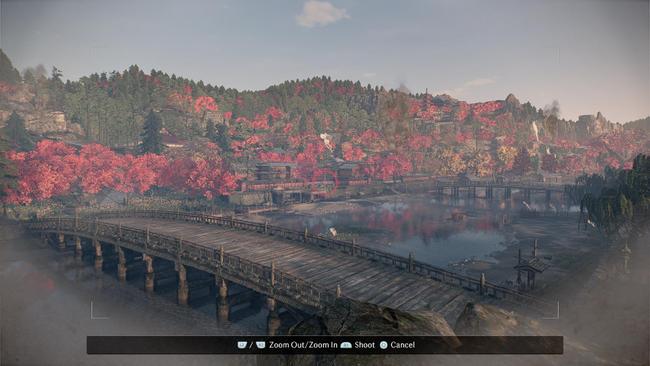
The only open-world activity I liked was taking photographs of significant locations. Team Ninja went the extra mile in this regard, as it brought special attention to important landmarks that did have a cultural impact that helped define the Bakumatsu era.
Rise of the Ronin also suffers from a poor first impression of its open-world environments. The initial region of Yokohama has a strong visual identity in the city itself, and its surroundings feel lackluster in comparison. Their color palette leans more on the dull end, while the subsequent Edo and Kyoto regions amp up the vibrancy of the world with much more lush locations. When snow starts to become more prevalent in Rise of the Ronin, it’s a beautiful sight to behold.
On the other hand, the linear stages for story and side missions tend to be more interesting and engaging than the open-world activities. They follow the same blueprint as Nioh’s stage progression, though it feels like most of the stages don’t last quite as long as a typical stage in Nioh. The vast majority of them are linear paths with a boss at the end, though it’s up to players to decide if they want to take a loud or stealthy approach.
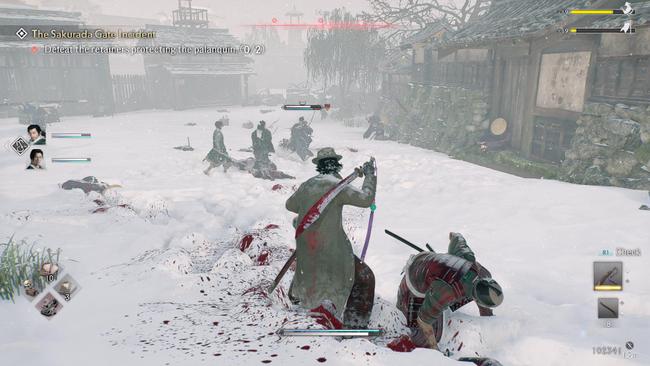
People won’t have to worry about anything like Wo Long’s morale and fortitude system in Rise of the Ronin; it retains the straightforward stage progression that the Nioh games possessed. There will be banner checkpoints to raise in order to refill health and restock items. Subsequently touching the same banner will respawn enemies.
Combat in Rise of the Ronin is a captivating Frankenstein’s monster of ideas. A lot of Nioh’s DNA is easily felt throughout it, though it’s mixed with a bit of Wo Long’s parry-centric ideas. What’s more riveting is that even some inspiration from the Way of the Samurai series made its way into this title.
Just like Team Ninja’s recent action RPGs, battles revolve around managing a health and Ki stamina bar. Completely draining an enemy’s Ki leaves them briefly open for a powerful critical strike. As people continually land strikes on their foes, a foe’s maximum Ki decreases. Every single weapon has access to a basic attack string, an advancing attack that moves players forward, and a charge attack that is all mapped to the same button.
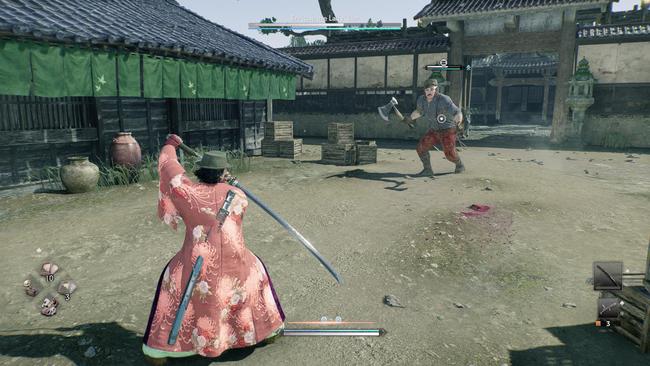
Instead of a secondary heavy attack button, the game introduces a maneuver called a counterspark. This fundamentally parries incoming attacks, though the properties and timing of a counterspark can vary between a weapon’s combat style. Some countersparks have an attack animation associated with it, while others merely adopt a parry-ready stance. Merely countersparking basic attacks won’t have much of an effect unless the final move of an attack string is countersparked to knock the enemy off balance for a few moments.
Enemies will eventually glow red for some of their attacks indicating they’re about to execute a deadly Martial Skill. These attacks can’t be blocked and have to be perfectly countersparked (or dodged) to mitigate their damage completely. Gaining momentum in encounters may leave foes in a state of panic, which will make a player’s own Martial Skills more potent against them.
Rather than replicating Nioh’s stance system, Rise of the Ronin introduces different combat styles for all of its weapon types. Every weapon category learns at least three styles; it may be easier to think of these styles as different schools or practices for a weapon. Dual-paired swords, for instance, can learn the Niten Ichi-ryu, Kyoshin Meichi-ryu, and Tennen Rishin-ryu combat styles that were all real practices that existed.
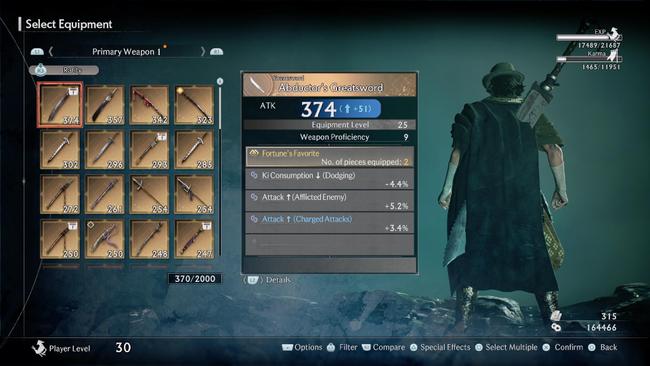
What this means for Rise of the Ronin is that every single style has a completely different moveset and exclusive Martial Skills. Each style will have at least one learnable Martial Skill and the last slot is reserved for transferring the Martial Skill of another style in that weapon category once it has been mastered.
Combat styles are assigned one of four attributes - Ten, Chi, Jin, or Shinobi. The first three have a rock, paper, scissors trichotomy and the Shinobi attribute is technically disadvantageous to every other style, though a well-timed counterspark will stagger enemies immensely, regardless of whatever style they have.
People can seamlessly switch to another style in the middle of combos and even switch to a different weapon altogether, as well. Nioh’s Ki Pulse mechanic surfaces through the Blood Gauge, so players can recover some Ki immediately after an attack string. Rise of the Ronin retains the responsive fast-paced ebb and flow of battle that Team Ninja is known for, though it takes it in an enthralling direction with a fusion of Western and Eastern battle styles colliding.

While many of Nioh 2 and Wo Long’s more unconventional weapon types, such as the kusagari-gama, switchglaive, hammers, and poleaxes didn’t make the cut, Rise of the Ronin does introduce a few new weapon types. Bayonets blend melee and ranged combat as attack strings can be ended with gunshots. Greatswords have their own distinct category from the odachi and are some of the heaviest hardest-hitting weapons with their gigantic slabs of steel. Polearms and spears are separate types too. A weapon type I became fond of was the oxtail blade, which are curved Chinese swords with a very agile moveset.
One of the more disappointing omissions is that fists no longer have dedicated weapons. People can still choose to forego weapons altogether and go unarmed; they’ll even have dedicated Martial Skills for it, but I would’ve liked to see them make a return here. Both wooden weapons and going unarmed allow players to take out foes non-lethally.
Secondary weapons such as rifles, bows, and shuriken make a return. The two new inclusions to toy around with are a prototype flamethrower and a handgun. If a player happens to be yearning for a Bloodborne approach to interrupting incoming attacks, a well-timed shot from the handgun can disrupt them.
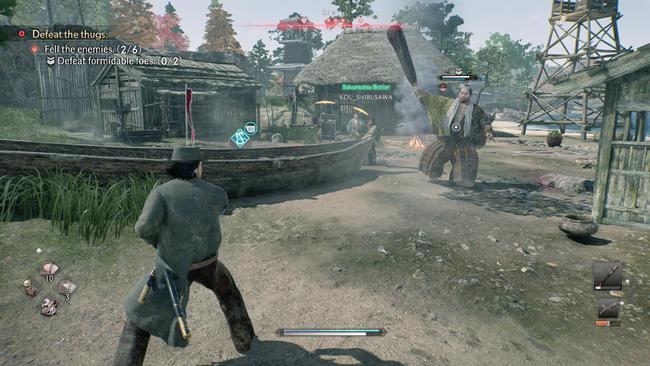
Since Rise of the Ronin contains no elements that diverge too much from reality, there is no magic system at all. The closest the game gets to this is allowing players and other characters to apply fire, electricity, or poison to their weapons to inflict status ailments. Even bosses are all relatively down-to-earth because they’re all humans, though some of their movesets can get pretty absurd and stretch the limits of reality. I found it easier to understand and adapt to the enemy's movesets because their movements were never too unnatural to follow. Their anatomy still mostly respects what the human body is capable of, unlike some of the oversized demonic encounters found in previous Team Ninja titles.
In regard to learning enemy movements and patterns, one of my favorite features in the game is the training dojo. As new bonds are forged with combatants, the dojo allows players to face-off against them 1-vs-1. Minimizing incoming damage, dealing multiple critical hits, and how fast the opposition is defeated give a better performance rank with rewards. This pushes players to truly understand an enemy’s moveset and when are the most opportune times to go on the offensive.
Because I took the time to undergo this process, there were moments in the narrative when I could identify a masked or disguised boss through their moveset and behaviors alone. There are naturally times throughout the game when uneasy alliances are made, broken, and re-established; today’s ally is tomorrow’s enemy, and such. Sometimes the same person will have multiple entries in the dojo because they are wielding a different weapon because bosses will constantly switch combat styles and weapon types, as well.
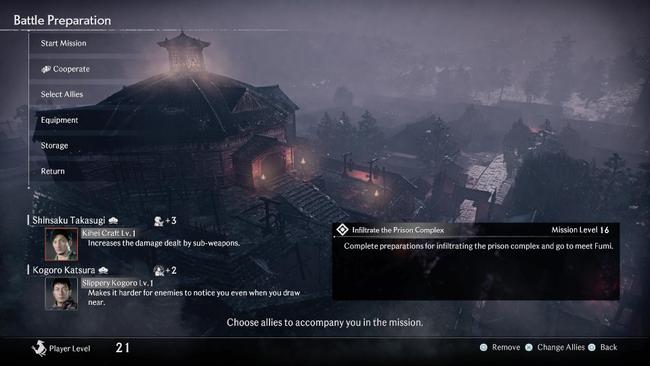
Rise of the Ronin further expands the NPC allies it regularly provided in Wo Long. Up to two combatants can regularly join players in missions, though players can opt to go solo of course. There are some minor beneficial effects in bringing NPC allies, but the most significant one is that people can actually swap to one of their allies and immediately take control of them. If the main character’s HP bar is fully depleted, people can simply have one of the other two allies revive them. Some playable allies also have completely unique weapons that are not normally available to the main character.
Due to this party-based focus, I think the average difficulty level on the initial playthrough in this game is generally lower than the first playthrough of Team Ninja’s previous action RPGs. There are challenging bosses here and there, especially in the final stretch, though having the other allies relieves much of the tension. Once again, players can choose to go solo if they want and there are still a good chunk of mandatory 1-vs-1 duels. People can instead choose to play with two real players via online multiplayer, too.
Leveling up in Rise of the Ronin works quite differently from Team Ninja’s prior games. Players have an EXP bar to raise a character’s level and a separate karma bar that rewards skill points and attribute points. Instead of manually allocating points to specific stats, there are four separate trees for strength, dexterity, charm, and intellect. As people invest skill and attribute points into each to learn new techniques, increase potion potency, lower prices, enhance secondary weapons, and so forth within each of these four attributes, they’ll raise the associated stats of that attribute. This game even has speech skills to lie, intimidate, and persuade during certain interactions to bypass battles or earn more rewards from doing a task.
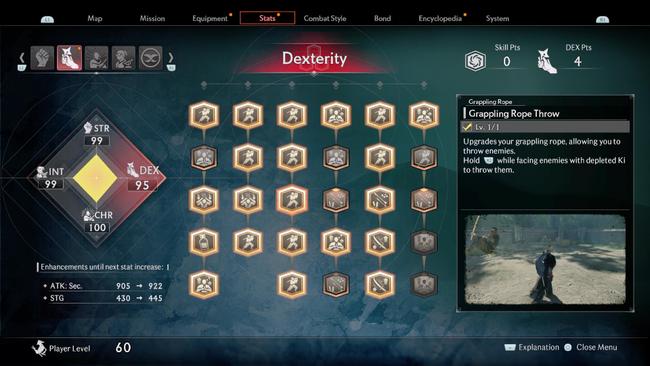
Skill and attribute points can be rewarded by reaching certain bond levels with characters and completing numerous other side tasks. Therefore, dying doesn’t cause players to drop a resource that would’ve been expended to allocate stat points. Instead, it depletes a huge chunk of their karma bar; in order to retrieve it, they must score a critical hit or kill the person who killed them to earn back the amount of karma they lost.
For those who are concerned with fashion, players can always change the appearance of their main character once they unlock the home base longhouse in a region. They can also transmogrify their equipment, so they can keep upgrading their desired equipment pieces without looking like a nightmare.
After completing the main campaign, a new higher difficulty is unlocked both for open-world enemy encampments and story missions. All the enemy encampments throughout the regions respawn with a new surprise for players. Plus, a new higher tier of equipment is only obtainable in the new difficulty. An entire brand-new skill tree is unlocked, as well. There are compelling reasons to keep on playing Rise of the Ronin after the credits roll, if people want to rise to the challenge and see their characters get even more powerful.
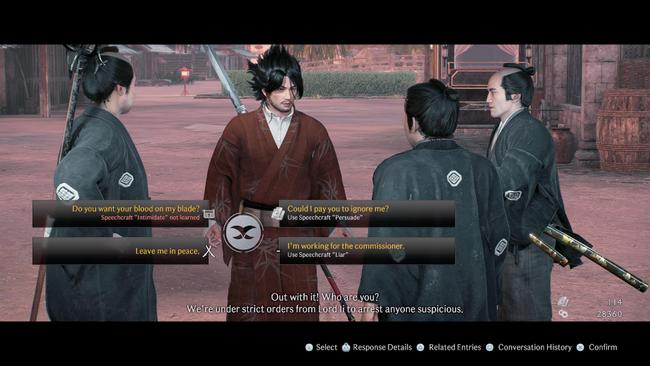
As for Rise of the Ronin’s technical performance, it isn’t in the best shape. The title offers a performance mode and two graphical modes with one specialized in ray tracing. I played on performance mode most of the time, since it was able to maintain 60fps during combat encounters. There are very noticeable dips in performance, especially in the populated city areas; Rise of the Ronin even struggles to maintain a solid 30fps in the other graphical modes during these sections. Pop-in of models and assets is a frequent problem.
Rise of the Ronin is a solid action RPG that provides a thorough look into the Bakumatsu era of Japan. I enjoy stories about that historical period, so I think a lot of my enjoyment of this game’s narrative stems from that foundation. It is relatively much more grounded than Team Ninja’s previous action RPGs as it contains no mythical, supernatural, or fantastical elements; Rise of the Ronin is a story about humans all the way through. While this title retains the awesome action combat that Team Ninja is known for, its open-world activities lack variety, and much of what it has to offer in that regard has been done before, and even better, in other open-world titles.